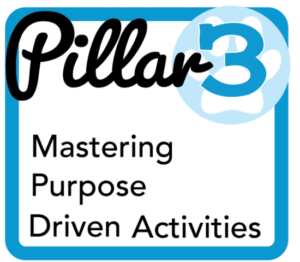WALKING, TETHERING, PLAYING, PLACE
This is what you are doing when your dog is not in your crate.
If you need a refresher on our Pillars of Pack Leadership, read PIllar 1 and Pillar 2.
Dogs love order, and when you practice leadership and boundaries in these activities you are building a solid foundation with your dog.

This week we focus on TETHERING!
Tethering is a very important part of any training program! It helps a dog tune in to you and learn how to JUST BE right along with you as you live your life. Put a leash on a dog, hold onto the leash with your hand or hook to your belt, and simply go about your business. Insist that your dog not pull you around the house and rather accompanies you as you move around. Tethering is about calm, quiet togetherness, not about play, excitement, or affection. If you sit down to do some bookwork, your dog should be near you. Tethering is a quiet exercise—no commands are given. He decides if he sits, stands, or lies down. Tethering is not an affection exercise, so do not talk to or touch your dog during this process. If he nudges or jumps on you, use your leash to move him slightly away from you. Before long, he’ll learn how to appreciate just being with you without being fussy or demanding. I recommend tethering at least two times per day for an age-appropriate time. The older a dog is the longer he can tether.

Tips for Tethering your Dog:
- If the door sends your dog into a state of crazy, make frequent tethered walks to the door, get a sit, and wait for calm. Then leave the door area.
- Practice tethering when your dog has already had some exercise and isn’t pent up with energy.
- If your dog jumps or is pesty, just keep using your leash to move him away from you. You can also use a Pet Convincer to give him a blast of forced air if he is a repeat jumping offender.
- Tether your dog to you three to five times a day for twenty minutes or more! Tether when you are working in the garden, sweeping, mopping, dusting, doing laundry, cleaning dishes, working on the computer, making phone calls, watching TV, reading a book, etc.
- Let your dog decide his own position as you are tethering. If you stop and read a book, he decides if he lies down, sits, or stands. The goal is that your dog will eventually choose to immediately default to a relaxed and calm position of his own choosing when you are busy or otherwise involved in an activity.
If you want to learn more about Aly’s Pillars of Pack Leadership, take her online class.
